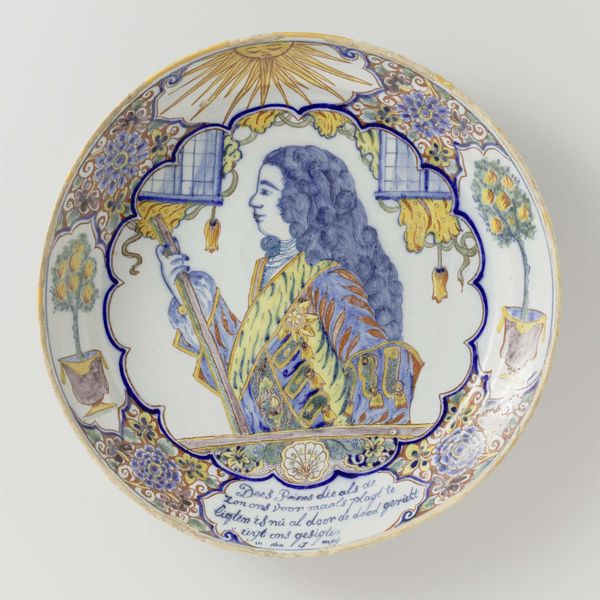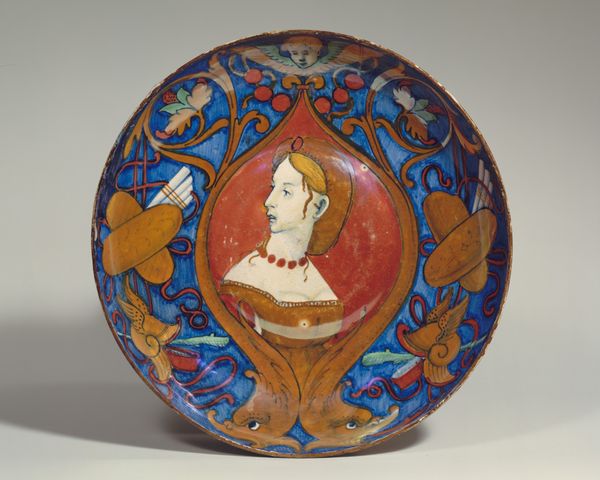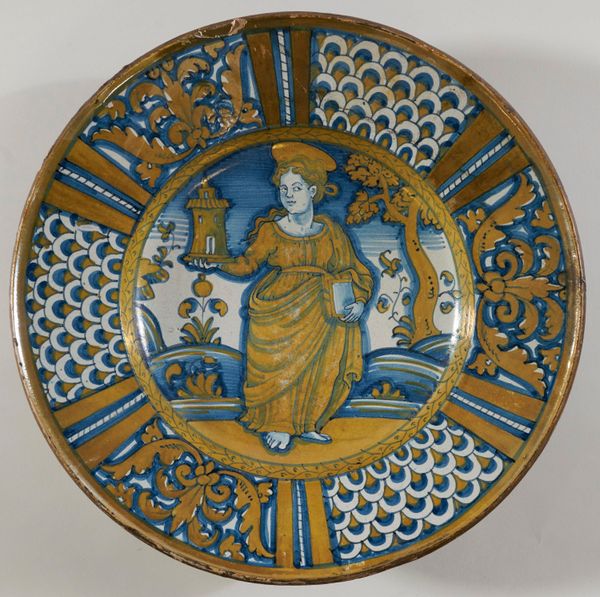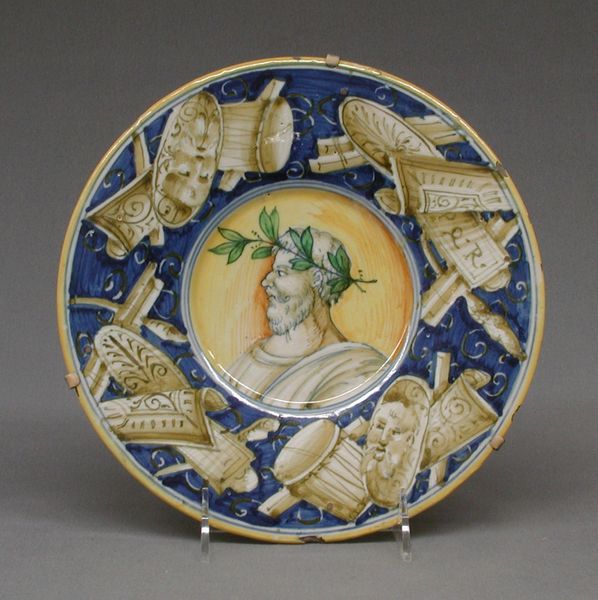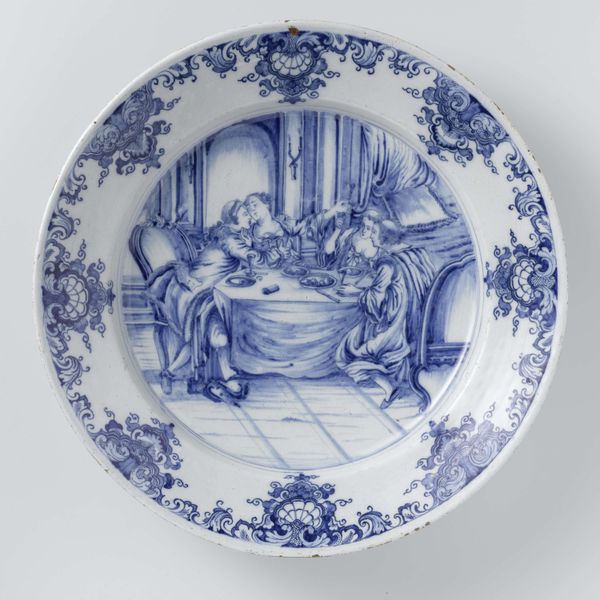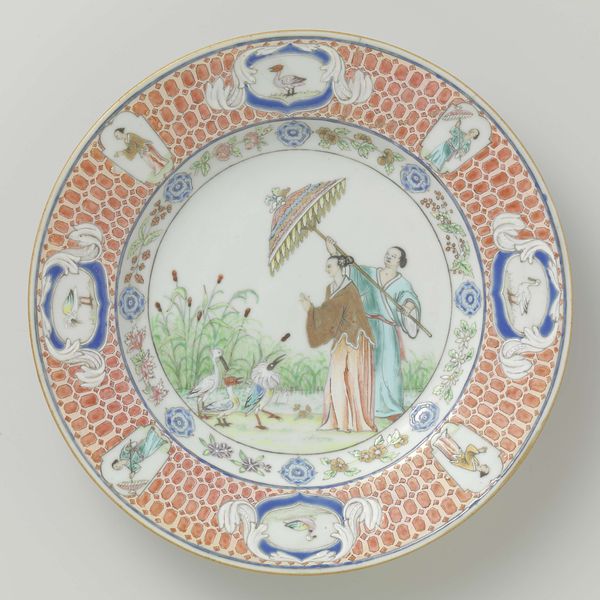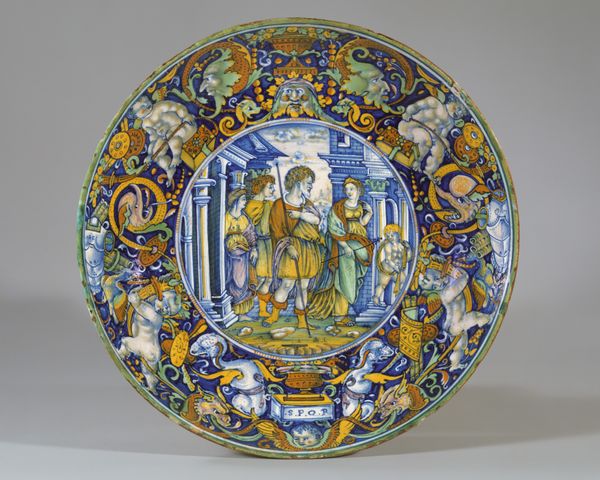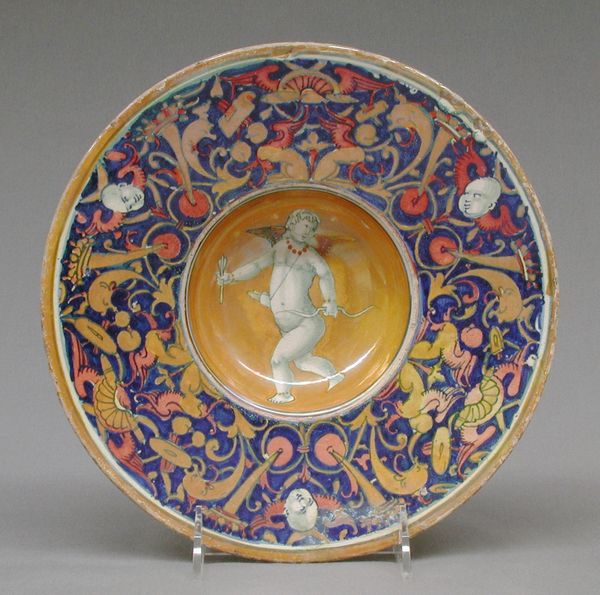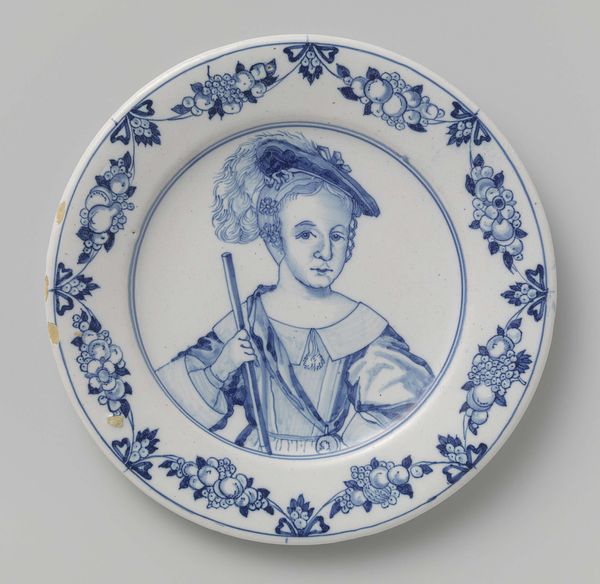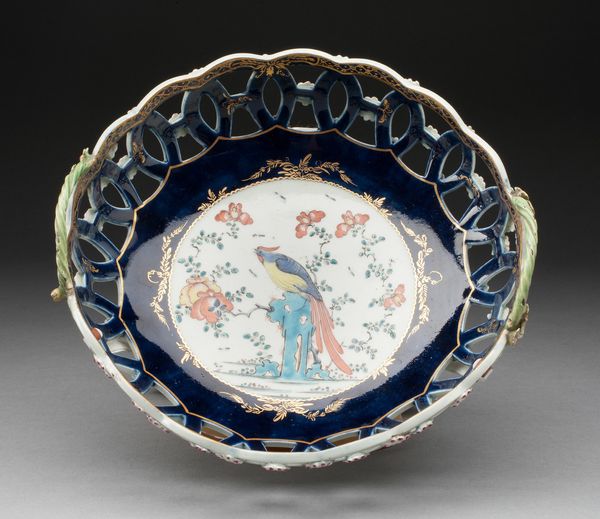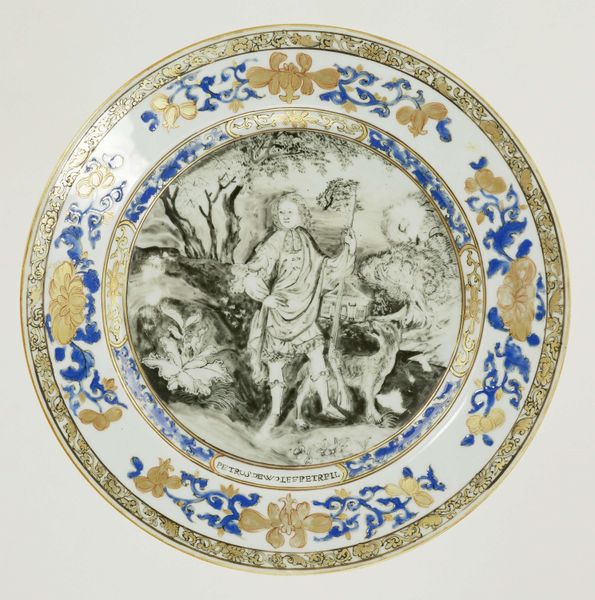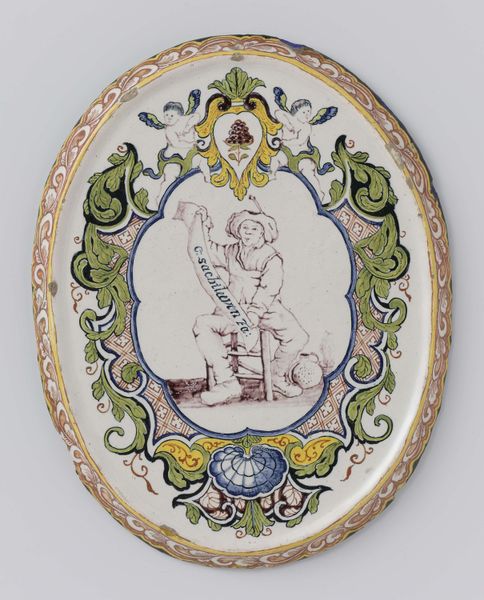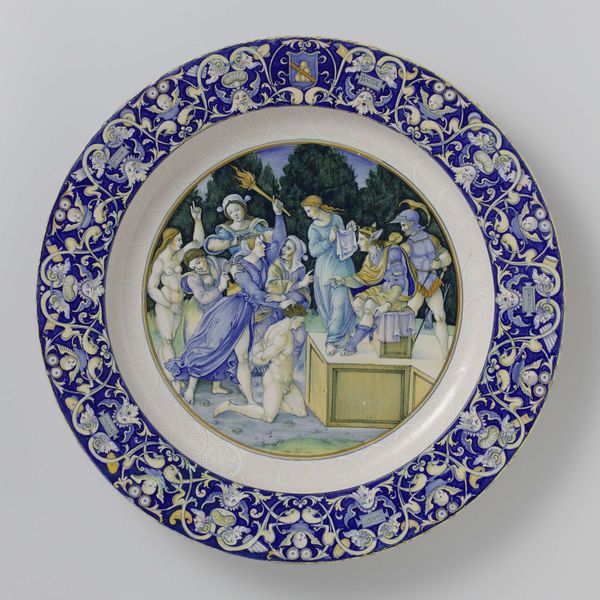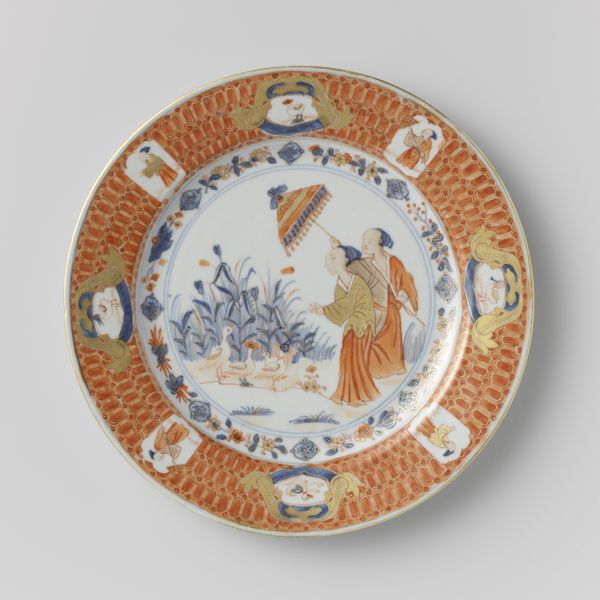
Schotel, beschilderd met portret Anna van Hannover, echtgenote van stadhouder Willem IV 1758
0:00
0:00
painting, ceramic, earthenware
#
portrait
#
painting
#
ceramic
#
earthenware
#
ceramic
#
earthenware
#
genre-painting
#
rococo
Copyright: Rijks Museum: Open Domain
This plate, made in the Netherlands in 1758, depicts Anna of Hannover, wife of the Dutch Stadtholder William IV, in painted earthenware. Commemorative objects like this plate were part of a wider visual culture through which the House of Orange sought to consolidate its power. Ceramics like this one, were made in large quantities and sold relatively cheaply. In contrast to unique portraits commissioned by the elite, the mass production of images for plates and other household objects, meant that the likenesses of the powerful became part of daily life for a much wider section of society. The depiction of Anna is framed by classically-inspired architectural features, evoking her status and refined tastes. Two orange trees -visual puns referring to the House of Orange- flank the figure, as well as the sun at the top symbolizing power. Historians explore a wide range of sources to understand the social function of such images at the time of their production, including inventories of household goods, production records and pamphlets.
Comments
No comments
Be the first to comment and join the conversation on the ultimate creative platform.
